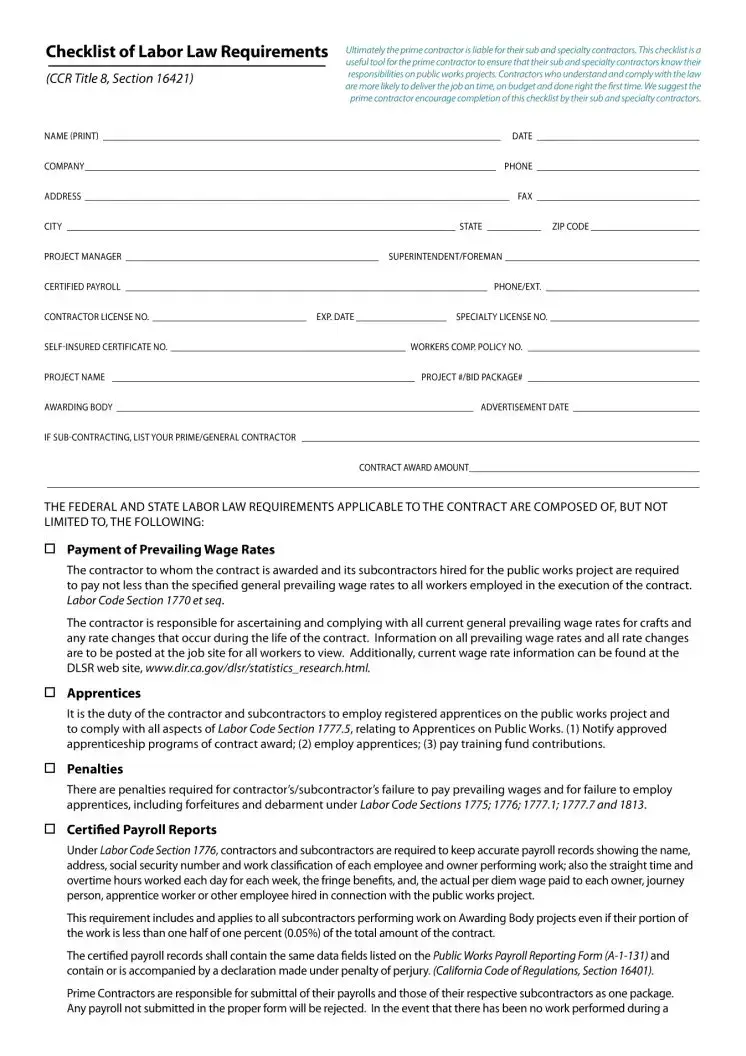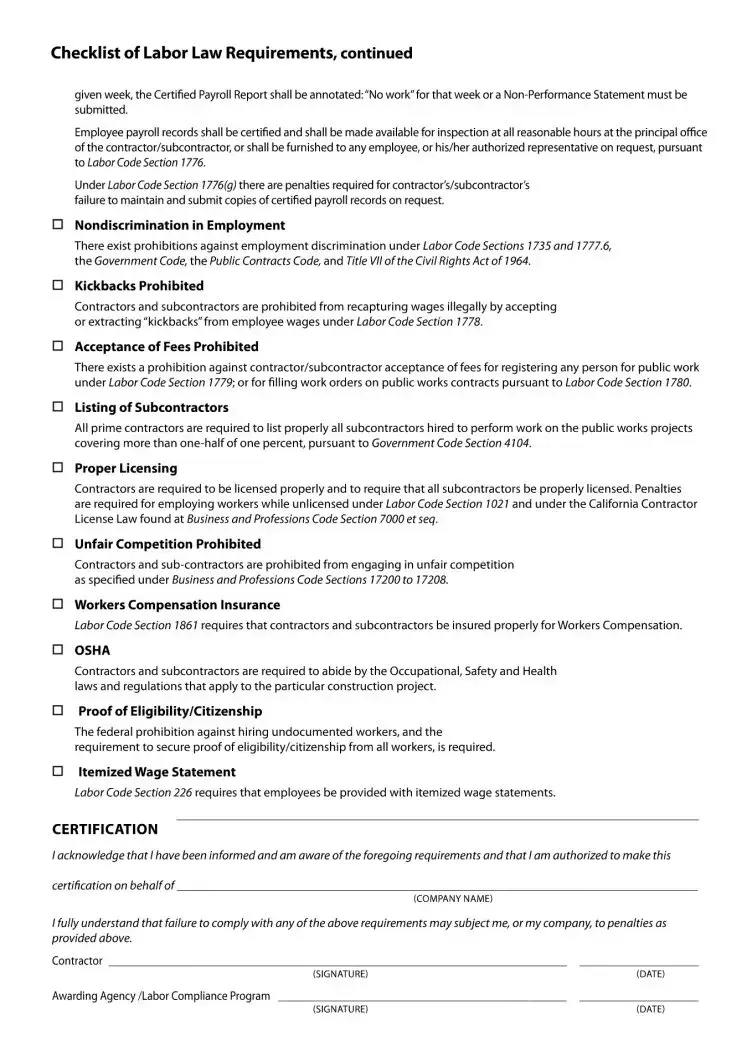Fill Out Your Checklist Labor Law Form
The Checklist Labor Law form serves as a comprehensive guide for contractors and subcontractors engaged in public works projects, outlining essential labor law requirements as specified in CCR Title 8, Section 16421. This checklist ensures that all involved parties are aware of their responsibilities, including the payment of prevailing wage rates, the employment of registered apprentices, and the submission of certified payroll reports. Contractors are encouraged to complete the form to promote compliance and streamline project execution.
To get started on filling out the Checklist Labor Law form, please click the button below.
Launch Checklist Labor Law Editor Now


